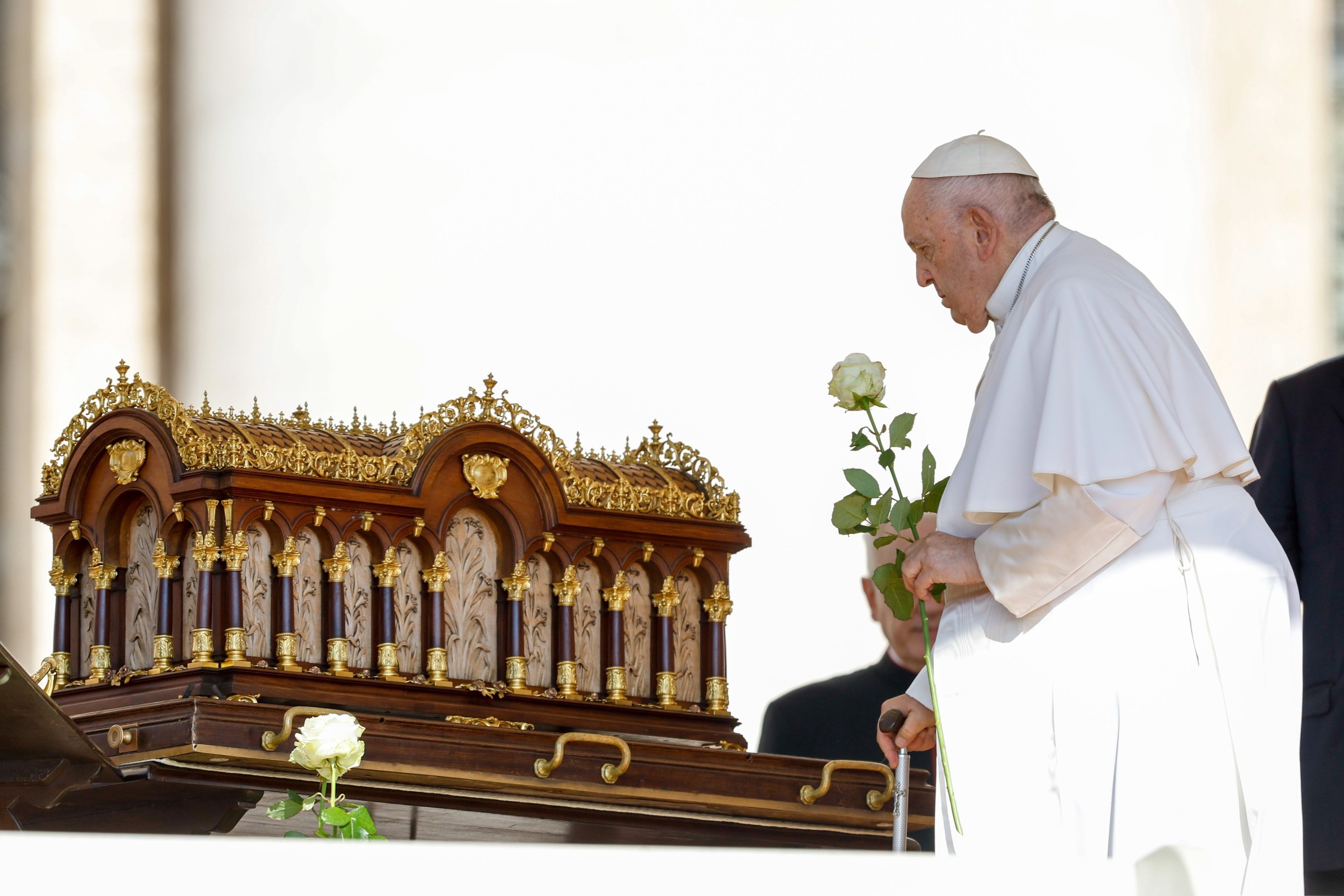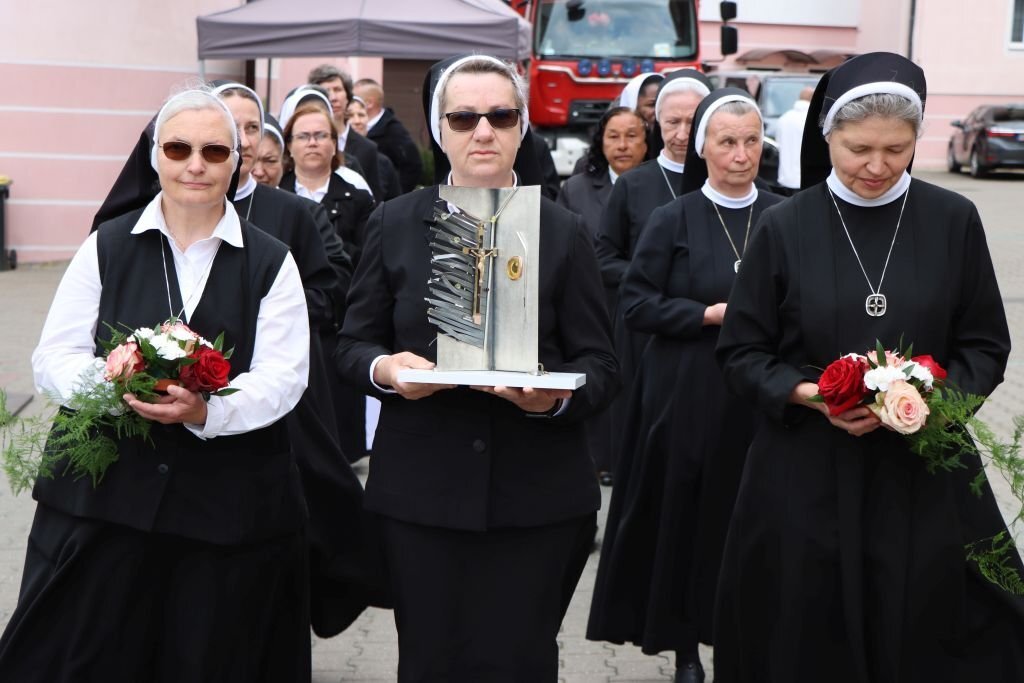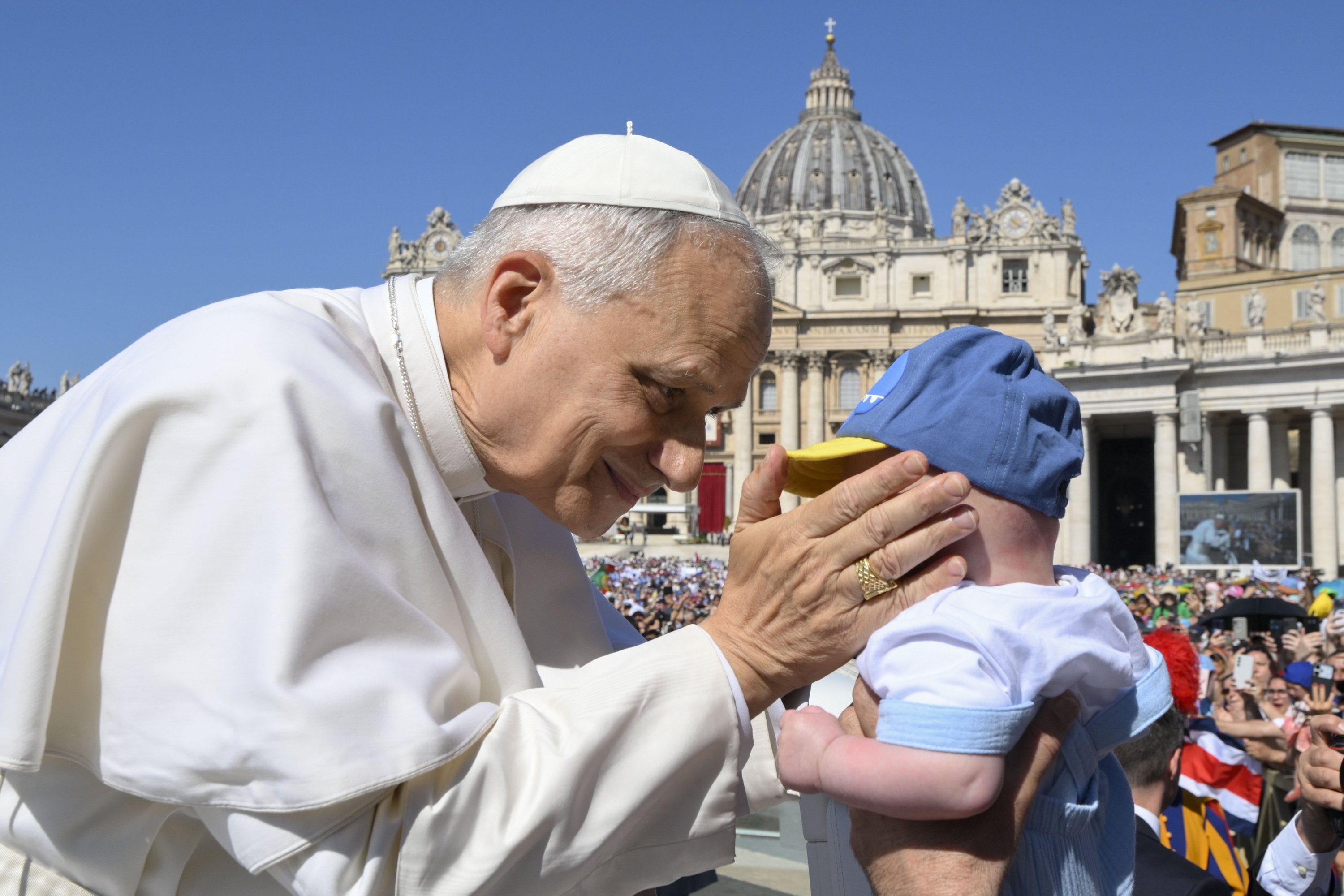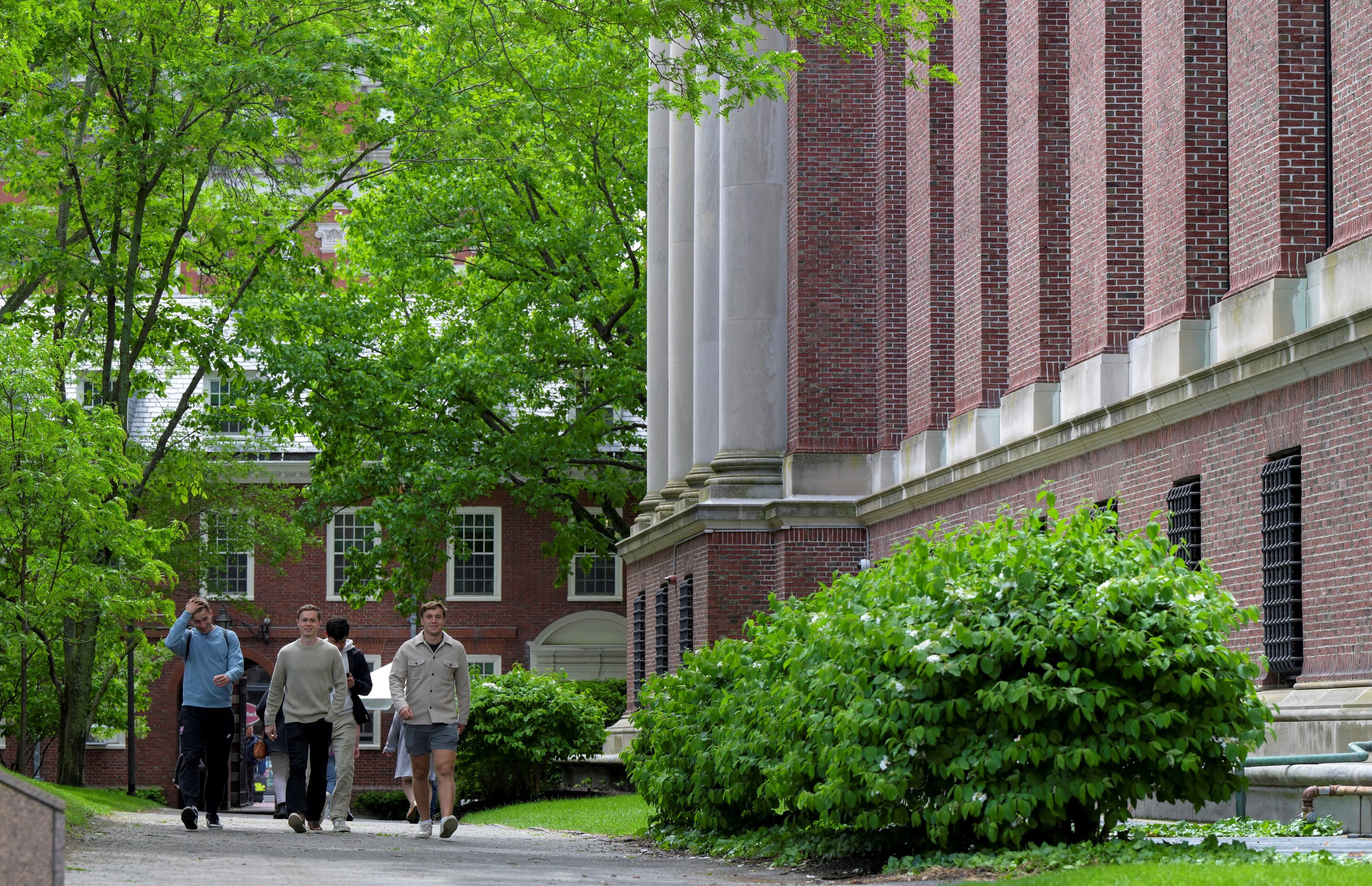Posted on 06/2/2025 18:49 PM (CNA Daily News)
 Karol Nawrocki, presidential candidate of the Law and Justice Party (PiS), speaks to supporters following the Polish presidential runoff election on June 1, 2025. / Credit: Marek Antoni Iwaczuk/SOPA Images/LightRocket via Getty Images
Karol Nawrocki, presidential candidate of the Law and Justice Party (PiS), speaks to supporters following the Polish presidential runoff election on June 1, 2025. / Credit: Marek Antoni Iwaczuk/SOPA Images/LightRocket via Getty Images
CNA Staff, Jun 2, 2025 / 14:49 pm (CNA).
In a tightly contested runoff election, nationalist candidate Karol Nawrocki won Poland’s presidency with 50.89% of the vote, narrowly defeating Warsaw mayor Rafał Trzaskowski’s 49.11%, according to final results announced Monday.
Nawrocki, a 42-year-old historian and former amateur boxer, ran on a platform emphasizing traditional Catholic values and cultural and political conservatism. He has vowed to maintain close ties between the Polish government and the Catholic Church, saying he views faith as a cornerstone of national culture.
During the campaign, Nawrocki made headlines by publicly shredding a copy of “Gender Queer: A Memoir,” signaling his staunch opposition to progressive social policies. He has pledged to veto any legislation liberalizing Poland’s strict abortion laws or introducing same-sex civil unions, citing the Catholic Church’s teachings on sexual ethics and the need to protect traditional family structures.
“Poland’s strength lies in its faith and family values,” Nawrocki declared at a campaign rally, framing his presidency as a defense against secular influences.
His conservative stance contrasts sharply with Trzaskowski, who campaigned on progressive reforms, including abortion law liberalization, support for LGBTQ+ civil partnerships, and deeper European integration.
Nawrocki is expected to use his presidential veto to block Prime Minister Donald Tusk’s pro-European Union, reformist legislative efforts.
The Polish presidency, while largely ceremonial, wields significant influence through its veto power, which requires a 60% parliamentary majority to override — a threshold Tusk’s coalition lacks. This dynamic echoes the tenure of outgoing President Andrzej Duda, a PiS (Law and Justice Party) ally who consistently thwarted Tusk’s attempts to reverse PiS-era judicial reforms.
Poland’s president is elected to a five-year term through a two-round voting system, with a runoff between the top two candidates if no one secures a majority in the first round. Presidents may serve up to two terms. Duda’s second term ends on Aug. 6, when president-elect Nawrocki will be sworn in to office.
The election, the closest in Poland’s post-communist history, underscores the country’s deepening political divide. Early exit polls had predicted a Trzaskowski win, while the actual results ended up reversing those projections. Exit polls also showed that younger voters leaned toward Nawrocki in the runoff.
Nawrocki’s win has broader implications for Poland’s role in Europe. His opposition to strengthening EU ties and Ukraine’s NATO membership sets him apart from Trzaskowski’s pro-EU platform.
Nawrocki has expressed strong opposition to illegal immigration, advocating for policies that prioritize Polish citizens and reject EU-driven migration frameworks.
“My Poland is a Poland without illegal migrants,” he said during his campaign.
Conservative European leaders celebrated the result, with Hungary’s Prime Minister Viktor Orbán calling it a “fantastic victory” and France’s Marine Le Pen, deputy of the French National Assembly, praising it as a rejection of the “Brussels oligarchy.”
Nawrocki attended the National Day of Prayer at the White House last month, posing for photos with President Donald Trump, who supported Nawrocki’s presidential bid.
At a Conservative Political Action Conference (CPAC) meeting in Poland last week, U.S. Homeland Security Secretary Kristi Noem also strongly endorsed Nawrocki.
“I met with Karol, and let me be clear: He must be Poland’s next president. Are we on the same page?” Noem declared.
“You need to choose the right leader,” she continued. “You can be the ones to steer Europe back toward conservative values.”
Posted on 06/2/2025 16:17 PM (CNA Daily News)
 A view of the Vatican Apostolic Library in 2021. / Credit: Franco Origlia/Getty Images
A view of the Vatican Apostolic Library in 2021. / Credit: Franco Origlia/Getty Images
Vatican City, Jun 2, 2025 / 12:17 pm (CNA).
The Vatican Library is the custodian of a major part of humanity’s literary heritage. That includes more than 80,000 ancient manuscripts and 2 million printed books (8,600 of which are “incunabula,” that is, printed before 1501); a graphic collection (drawings, maps, engravings, photographs); 150,000 documents; a large collection of coins and medals (300,000 pieces); and a collection of archives (100,000).
The library is currently in the process of digitizing and publishing online all the manuscripts it houses, a project that first started in 2012. When necessary, manuscripts receive conservation treatments or are restored before digitization. So far, some 30,000 manuscripts have been digitized and published online. This work is made possible due to the support of many benefactors, including the Sanctuary of Culture Foundation, which generously supports the digitization and restoration of manuscripts as well as other projects.
Recently, a new collaboration was launched between the Vatican Library and the Colnaghi Foundation, a prestigious art gallery founded in 1760. The two institutions are working together specifically on the library’s archives section.
The five-year agreement provides for the restoration and reorganization of the archives’ storage facilities, which will improve the future preservation of documents spanning the 10th to the 20th century. The archival collections include documents of exceptional historical value.
The project, which involves a complete reorganization of the department, including new shelving systems and renovations, will be led by the renowned British architectural firm David Chipperfield Architects.
The Colnaghi Foundation has promoted the creation of an association, the Patrons of the Vatican Library, to assist in the project and to study and carry out other projects related to the conservation treatments of many of the archival manuscripts.
The association has provided a new system for scanning the surface of documents, called Selene, developed by the Factum Foundation. Among other benefits, this device makes it possible to bring to light parts of objects that are hidden from view.
To celebrate this collaboration between the art world, represented by the Colnaghi Foundation and the Vatican Library, the “Codex” exhibition opened on May 26.
The exhibit features 14 works from private collections that are not normally exhibited. The library has also selected 15 documents from its collections (manuscripts and archival documents) related to the people portrayed in the exhibited works, the curators of those works, or the artists who created them.
On June 3, the works will return to private collections, and the Vatican manuscripts will be returned to their original collections.
The works on display offer a visual and historical journey through sacred art and portraits from the Renaissance and Baroque periods, highlighting pieces by some of history’s greatest masters.
The exhibition opens with “Saint Peter Penitent” by Flemish artist Anthony van Dyck, which depicts the weeping apostle with a deeply human expression of repentance and features baroque chiaroscuro (strong light and dark contrasts).

The exhibition continues with “The Triumph of Flora,” a mythological allegory by Mario Nuzzi, exuberant in color and symbolism, which celebrates the fertility of nature with a festive and decorative spirit that contrasts with the gravity of other pieces.
Another work on display is Michelangelo Buonarroti’s preparatory sketch for “The Adoration of the Brazen Serpent,” a powerful scene from the Old Testament. The drawing demonstrates the artist’s anatomical and expressive intensity, which manages to condense drama and redemption into a single figure.
The exhibition also includes works by other influential artists of the 16th and 17th centuries, such as Titian’s “Portrait of Pope Paul III,” painted during his trip to Rome between October 1545 and May 1546. This painting, in which the pope appears with a shrewd expression and the traditional camauro (red cap with white trim), a symbol of his authority, belongs to a private collection and is kept in Lisbon, Portugal.
Another portrait is that of “Clement VII,” painted by Sebastiano del Piombo. A highlight by the artist Tintoretto is his “Portrait of Cardinal Marcantonio da Mula,” which demonstrates the painter’s skill in combining the cardinal’s dignified appearance with dynamism.
Also featured in the exhibition is Guido Reni’s portrait of Camillo Borghese (later Paul V), painted during the first decade of the 17th century.
Among library documents featured in the exhibition, which aim to suggest a real dialogue with the works of art, are the 1628 invoice sent to the bishop of Gubbio for three Caravaggio paintings, including “The Card Cheats”; some notes and autograph drawings by Michelangelo Buonarroti; as well as a 1657 letter by Cardinal da Mula to Cardinal Guglielmo Sirleto.
Also among the documents in the exhibition is a 1526 contract signed with Sebastiano del Piombo for a panel of the “Nativity of the Virgin” in the Church of Santa Maria del Popolo.
The sharing of cultural heritage embodied by the Codex initiative represents, for the library, an essential tool for building bridges between cultures. The exhibition is considered a beautiful and concrete example of this, and an important demonstration of the collaboration between different institutions working together to achieve positive results in the conservation of cultural heritage.
This story was first published by ACI Prensa, CNA’s Spanish-language news partner. It has been translated and adapted by CNA.
Posted on 06/2/2025 16:12 PM (Detroit Catholic)

Posted on 06/2/2025 16:10 PM (Detroit Catholic)

Posted on 06/2/2025 15:50 PM (Detroit Catholic)

Posted on 06/2/2025 15:47 PM (Detroit Catholic)

Posted on 06/2/2025 15:46 PM (Detroit Catholic)

Posted on 06/2/2025 12:24 PM (CNA Daily News)
 Pope Leo XIV listens as a musician performs during a tribute to the life and legacy of Blessed Iuliu Hossu at a June 2, 2025, ceremony in the Sistine Chapel at the Vatican. / Credit: Vatican Media
Pope Leo XIV listens as a musician performs during a tribute to the life and legacy of Blessed Iuliu Hossu at a June 2, 2025, ceremony in the Sistine Chapel at the Vatican. / Credit: Vatican Media
CNA Newsroom, Jun 2, 2025 / 08:24 am (CNA).
Follow our live coverage of the pontificate of Pope Leo XIV, first U.S.-born pope in history.
Posted on 06/2/2025 10:00 AM (CNA Daily News)
 The miraculous image of Jesus Nazareno makes its way through the streets of Manila surrounded by thousands of devotees during the Traslacion procession celebrated annually on Jan. 9. / Credit: Photo courtesy of the Minor Basilica and National Shrine of Jesus Nazareno, Quiapo, Manila
The miraculous image of Jesus Nazareno makes its way through the streets of Manila surrounded by thousands of devotees during the Traslacion procession celebrated annually on Jan. 9. / Credit: Photo courtesy of the Minor Basilica and National Shrine of Jesus Nazareno, Quiapo, Manila
Manila, Philippines, Jun 2, 2025 / 06:00 am (CNA).
With multiple episcopal sees standing vacant and others soon to be without bishops, Asia’s largest Catholic nation faces a potential pastoral leadership crisis as the Church awaits new appointments from Rome.
The Philippines, home to 110 million people, with eight out of 10 identifying as Roman Catholic, currently has three vacant sees.
The Diocese of Boac in Marinduque province has been without a bishop since Sept. 21, 2024, after its local ordinary, Bishop Marcelino Antonio M. Maralit, was transferred to the Diocese of San Pablo, Laguna. Maralit is the current chair of the Episcopal Commission on Social Communication of the Catholic Bishops’ Conference of the Philippines (CBCP).
According to the 2023 Annuario Pontificio, the annual Holy See directory that lists the popes and all officials of the Holy See’s departments, the Diocese of Boac has a total population of 256,611 with 88% of the population identifying as Catholic. Seventy-nine priests serve the diocese, with a 1 to 3,248 priest-to-lay ratio. The diocese is recognized for its social action initiatives and its collaboration with Basic Christian Communities, small, grassroots groups of Christians that gather for prayer, fellowship, Bible study, and social justice activities.
The Apostolic Vicariate of Tabuk has been without an apostolic vicar since Dec. 8, 2024, when its former apostolic vicar, Bishop Prudencio P. Andaya Jr., CICM, was made bishop of the Diocese of Cabanatuan.
The Tabuk vicariate encompasses the highland provinces of Kalinga and Apayao, with a total population of 493,960. Only 31 priests serve the 75% of its population who identify as Catholic, mostly from the Indigenous Igorot tribe. That translates to a 1 to 11,966 priest-per-laity ratio.
The bishop’s chair of the Diocese of San Jose de Nueva Ecija has been empty since Dec. 12, 2024. Its former bishop, Roberto Mallari, was transferred to the Diocese of Tarlac. The diocese is located in the province known as the “rice granary of the Philippines.” Most of its residents are farmers who produce rice, corn, sugar cane, coconuts, mangoes, onions, fruits, and vegetables.
In addition to these empty sees awaiting new bishops, others may soon require new episcopal leaders.
In March of this year alone, three local ordinaries reached the optional canonical retirement age of 75 for bishops: Archbishop Angelito Lampo, OMI, of Cotabato on March 1; Bishop Patricio Buzon, SDB, of Bacolod on March 14; and Archbishop Jose Palma of Cebu on March 19.
According to the Catechism of the Catholic Church, a “local ordinary” is a bishop appointed by the pope to care for a local Church; to teach, govern, and sanctify the faithful of his diocese, sharing these duties with the priests and deacons who serve under him.
Other local ordinaries in the Philippines who will turn 75 in the coming months are: Bishop Jose Corazon Tala-oc of Kalibo (June 16), Archbishop Marlo Perlata of Nueva Segovia (July 13), and Bishop Jacinto Jose of Urdaneta (Oct. 29).
If the Holy Father accepts the retirement of these bishops, the Philippines will have nine sede vacante sees.
Most of these dioceses are located in provinces where the majority of its residents are workers in the agriculture sector. Bacolod and Cebu are exceptions, as they are located in bustling cities.

Cebu, known as the “cradle of Christianity in the Philippines,” is the largest diocese in Asia — home to 4.7 million Catholics (87% of the population). It has 176 parishes and nine missions ministered by 626 priests (348 diocesan, 278 religious) and 2,035 religious (1,010 brothers and 1,025 sisters). According to the 2024 Annuario Pontificio, it has 144 seminarians.
The bishops’ conference approved the Cebu Archdiocese’s recommendation to split the diocese into two suffragan dioceses: Danao in the north and Carcar to its south, thereby giving them their own bishops. (A suffragan diocese is typically a smaller diocese within an ecclesiastical province other than the larger metropolitan archdiocese.)
Filling these vacancies is not only a ministerial role of the pope, who has the exclusive right and authority to appoint a bishop, but also a necessity to ensure that the people of God have a shepherd looking after their spiritual and, sometimes, socio-economic needs.
“A vacant see creates a leadership vacuum. Appointing bishops to vacant sees means not depriving the people of a shepherd,” said Father Jerome Secillano, executive secretary of the CBCP’s episcopal commission on public affairs.
Many Filipinos, even when they are non-Catholics, look to Catholic bishops for moral guidance on socio-political issues. The popular late Cardinal Jaime Sin, when archbishop of Manila, was a vocal opponent of the dictatorial regime of Ferdinand Marcos Sr., father of the current president Ferdinand “Bongbong” Marcos Jr.
Sin was instrumental in two historic peaceful revolutions in the country — the People Power Revolution of 1986 and the 2001 revolt that forced the resignation of then-president Joseph Estrada.
During the tumultuous presidency of Rodrigo Duterte, the CBCP issued a pastoral statement condemning the rampant extrajudicial killings of drug suspects, earning the ire of the president. Duterte once suggested that Filipinos should “kill and steal from” Catholic bishops.
While Secillano stressed the importance of a local bishop setting the pastoral direction and priorities of the local Church or diocese that are beneficial to the people, he said the Holy See does not rush the appointment of bishops so that it can fill the leadership vacuum.
“There should be utmost prudence in doing it,” he said.
Posted on 06/2/2025 09:17 AM ()
Pope Leo XIV pays tribute to Blessed Iuliu Hossu, recalling his heroic defense of Jews during WWII and his unwavering faith under Communist persecution.